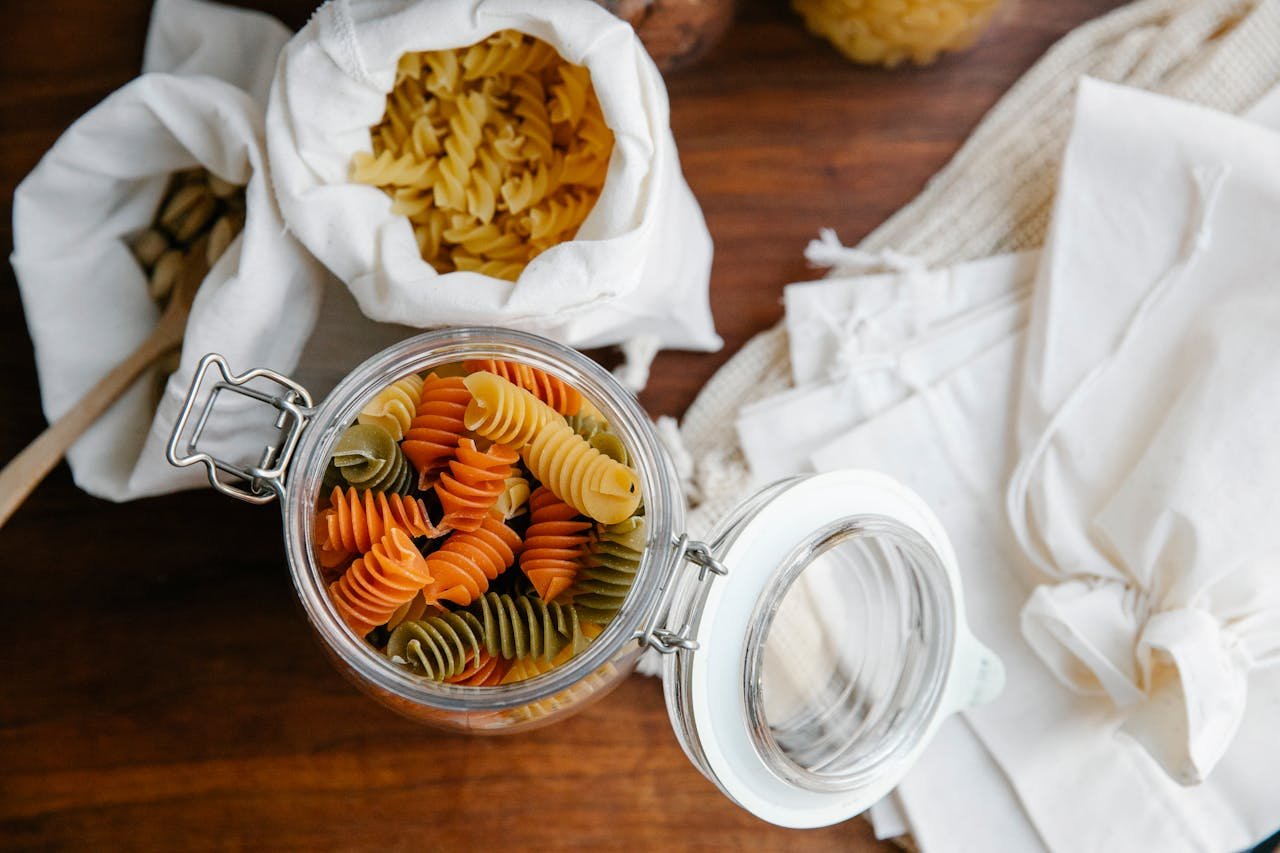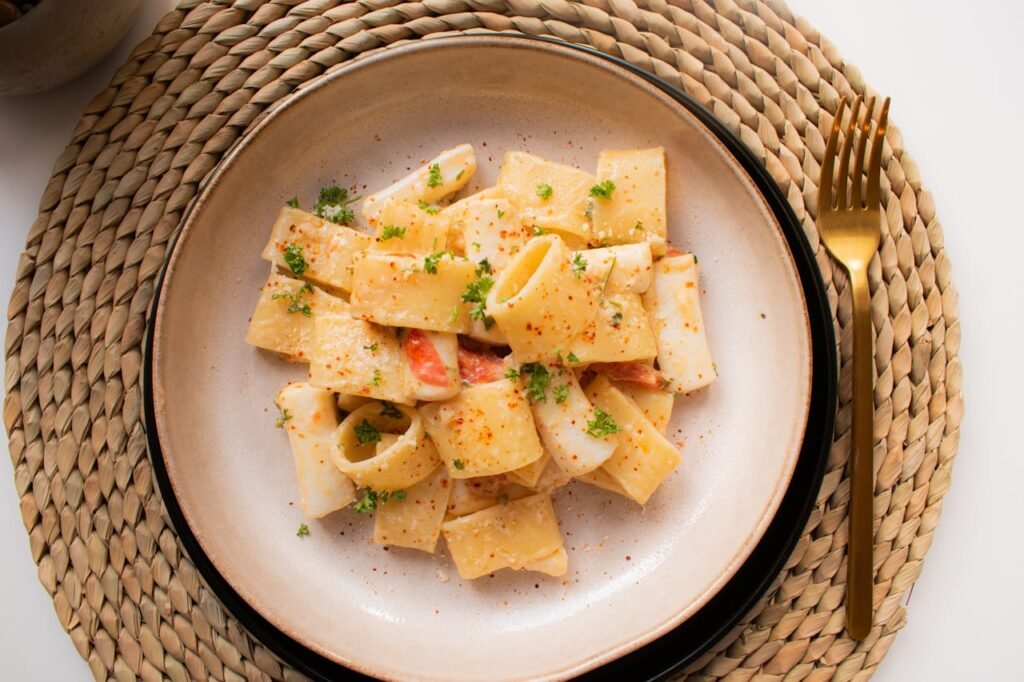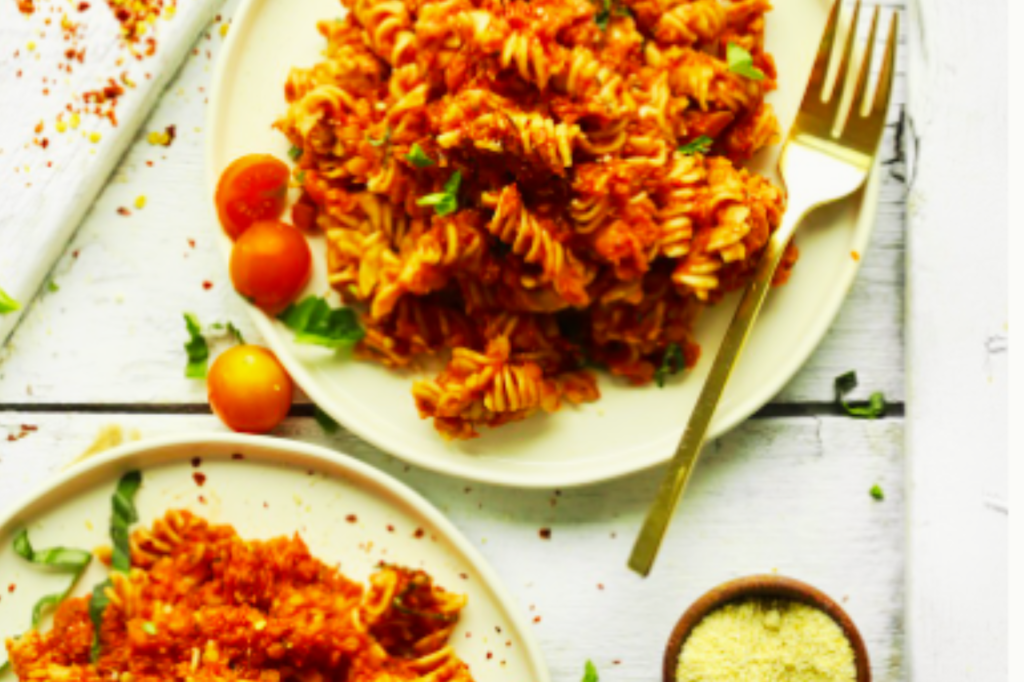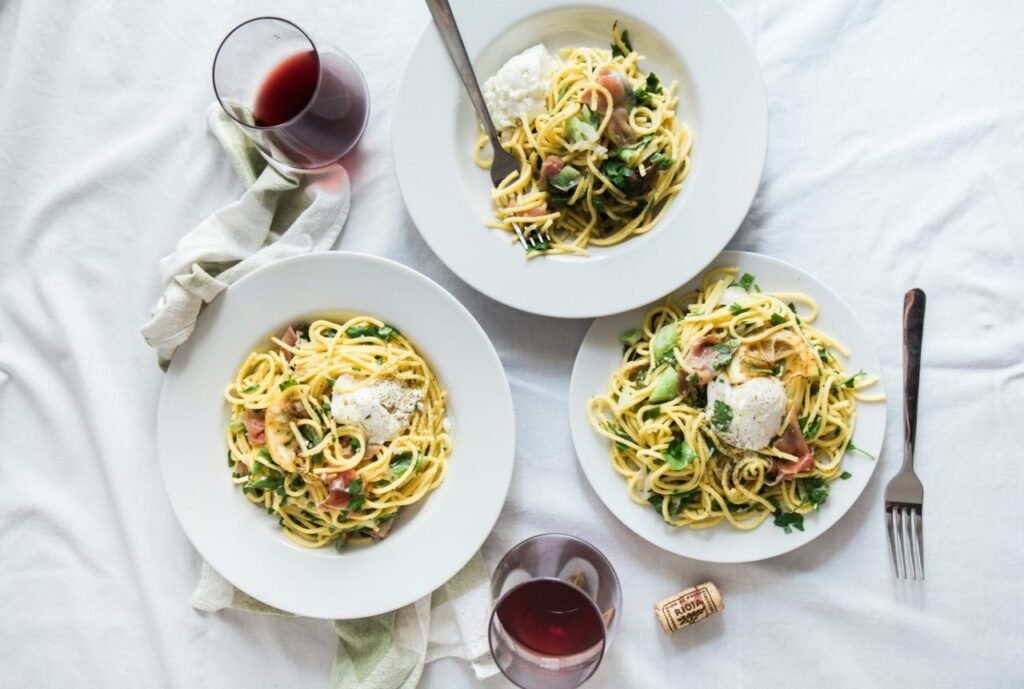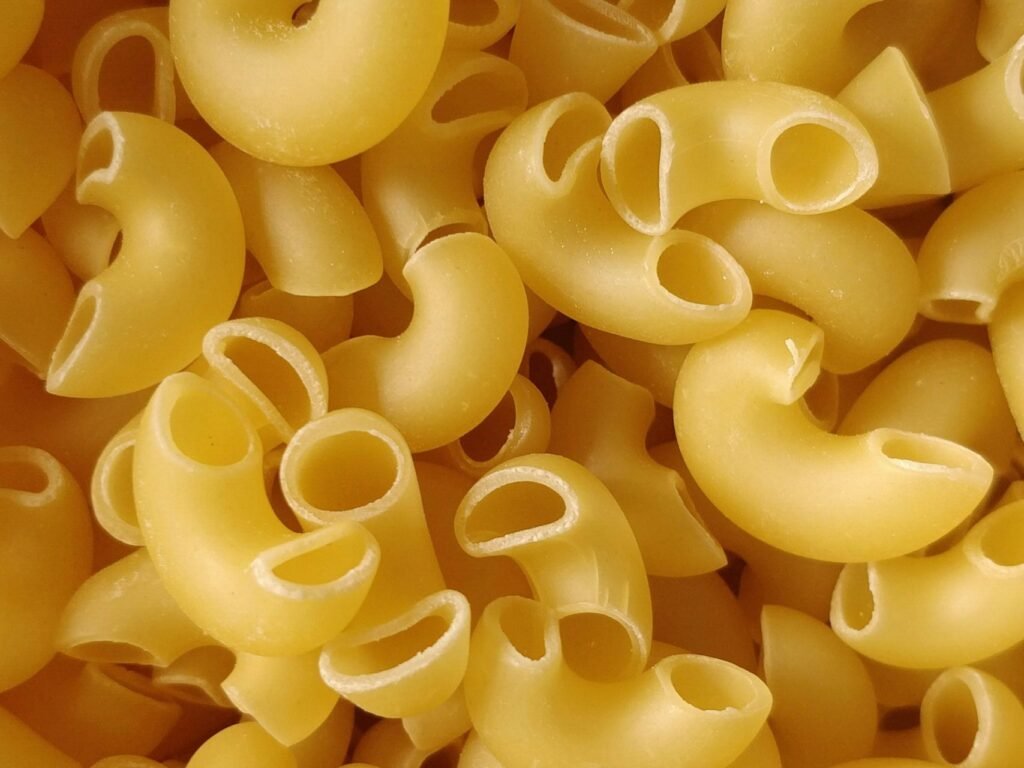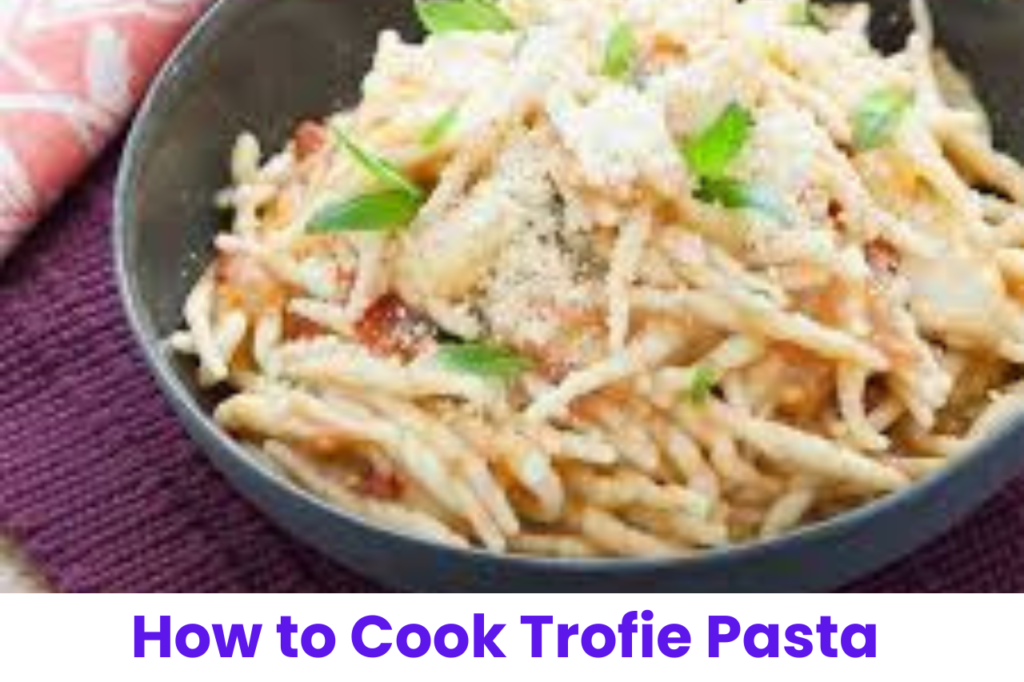Cooking pasta, like rotini, is a fundamental skill in the kitchen. The texture of pasta can make or break a dish, and mastering the art of cooking rotini to perfection ensures a delightful culinary experience. Rotini pasta, with its distinctive spiral shape, is not only visually appealing but also versatile in various recipes, from salads to casseroles. Rotini’s spiral structure allows it to hold onto sauces and ingredients, making it a popular choice for dishes that require a hearty texture. Whether you’re a beginner cook or an accomplished gourmet expert, understanding how to cook rotini pasta and accomplishing the best surface — known as “still somewhat firm” — is vital to making tasty feasts.
In this detailed guide, we’ll delve into the specifics of cooking rotini pasta, including recommended cooking times, factors influencing cooking, and tips for serving and incorporating cooked rotini into your culinary creations.
Understanding Rotini Pasta
What is Rotini Pasta?
Rotini pasta is a type of pasta characterized by its spiral or corkscrew shape. The name “rotini” is gotten from the Italian word “rotini,” signifying “little wheels” or “contorts.” This pasta shape is popular in Italian cuisine and is known for its ability to hold onto sauces and ingredients due to its unique structure.
Composition and Texture
Rotini pasta is typically made from durum wheat semolina flour and water, which gives it a firm and chewy texture when cooked. The spiral shape of rotini allows it to trap sauces and flavors effectively, making it a versatile choice for a wide range of dishes.
Cooking Properties
Due to its shape and size, rotini pasta has a moderate cooking time compared to other pasta shapes. It requires sufficient water for even cooking and regular stirring to prevent clumping. Rotini pasta is commonly cooked until “al dente,” where it is tender yet still slightly firm to the bite.
Varieties and Availability
Rotini pasta is widely available in both dried and fresh forms. Dried rotini is convenient for storage and has a longer shelf life, making it a staple in many households and commercial kitchens. Fresh rotini, made with eggs and flour, offers a softer texture and shorter cooking time, ideal for quick meals.
Nutritional Profile
Rotini pasta, like most pasta varieties, is primarily composed of carbohydrates. It gives a decent wellspring of energy and is low in fat. Whole wheat rotini offers additional fiber and nutrients compared to traditional semolina rotini.
Versatility in Cooking
The spiral shape of rotini makes it versatile in cooking applications. It works well in pasta salads, casseroles, soups, and baked dishes. Rotini’s ability to hold sauces and ingredients makes it a favorite for hearty dishes with robust flavors.
Cooking Techniques for Rotini Pasta
Water Ratio and Boiling Process
To cook rotini pasta properly, start by using a large pot filled with at least 4 quarts of water per pound of pasta. Adding enough water ensures that the pasta cooks evenly and doesn’t stick together. Bring the water to a rolling boil over high heat before adding the pasta.
Salt and Seasoning
Once the water reaches a boil, add salt to enhance the flavor of the pasta. Use approximately 1 tablespoon of salt for every 4-6 cups of water, adjusting based on personal preference. The salted water helps season the pasta from the inside out as it cooks.
Adding the Rotini Pasta
Carefully add the rotini pasta to the boiling water. Stir immediately to prevent the pasta from clumping together. Stirring also ensures that the pasta cooks evenly and doesn’t stick to the bottom of the pot.
Cooking Time and Testing for Doneness
Follow the cooking instructions on the rotini pasta package for guidance on cooking time. Typically, rotini pasta cooks in 8-10 minutes. However, begin testing the pasta a few minutes before the suggested time to ensure it reaches the desired texture of “al dente,” where the pasta is tender yet still firm to the bite.
Draining and Rinsing
Once the rotini pasta reaches the desired doneness, turn off the heat and carefully drain the pasta using a colander or strainer. Avoid rinsing the pasta unless you’re making a cold pasta salad, as rinsing removes starches that help sauces adhere to the pasta.
Reserving Pasta Water
Consider reserving a cup of pasta cooking water before draining. The starchy water can be used to adjust the consistency of sauces or to prevent dryness when combining the pasta with sauces later.
Using Fresh Rotini
If using fresh rotini pasta, reduce the cooking time accordingly. Fresh pasta cooks much faster than dried pasta and requires vigilant monitoring to avoid overcooking.
Mastering the cooking techniques for rotini pasta ensures that you achieve the perfect texture and flavor in your dishes.
Recipes and Serving Ideas for Rotini Pasta
Cooked rotini pasta is a versatile ingredient that can be used in various recipes, from classic pasta dishes to creative salads and bakes. Here are some exciting ways to incorporate rotini pasta into your meals:
1. Rotini Pasta Salad
Create a refreshing pasta salad by combining cooked rotini pasta with cherry tomatoes, cucumbers, bell peppers, red onions, olives, and feta cheese. Toss with a simple vinaigrette made from olive oil, red wine vinegar, Dijon mustard, garlic, salt, and pepper. Serve chilled as a side dish or a light main course.
2. Rotini with Tomato Basil Sauce
Toss cooked rotini pasta with a homemade tomato basil sauce. Sauté garlic and onions in olive oil until softened, then add canned diced tomatoes, fresh basil, salt, and pepper. Simmer until the flavors meld together, then toss with the cooked rotini. Finish with a sprinkle of grated Parmesan cheese.
3. Baked Rotini Casserole
Create a comforting baked casserole by combining cooked rotini pasta with marinara sauce, cooked ground beef or turkey, ricotta cheese, and shredded mozzarella. Transfer the mixture to a baking dish, top with more mozzarella, and bake until bubbly and golden brown.
4. Creamy Rotini Alfredo
Prepare a creamy Alfredo sauce by melting butter in a saucepan, then adding heavy cream, garlic, and grated Parmesan cheese. Toss the sauce with cooked rotini pasta and steamed broccoli florets for a satisfying and indulgent pasta dish.
5. Rotini Primavera
Make a vibrant pasta primavera by sautéing a mix of seasonal vegetables such as zucchini, bell peppers, carrots, and snap peas in olive oil. Toss the sautéed vegetables with cooked rotini pasta and finish with a squeeze of lemon juice and chopped fresh herbs.
6. Spicy Cajun Rotini
Create a spicy Cajun-inspired pasta dish by seasoning cooked rotini pasta with a blend of Cajun spices, diced chicken or shrimp, bell peppers, onions, and celery. Sauté everything together until cooked through and serve hot.
7. Rotini Caprese
Prepare a simple Caprese-style pasta by tossing cooked rotini pasta with fresh cherry tomatoes, mozzarella balls (bocconcini), fresh basil leaves, olive oil, balsamic glaze, salt, and pepper. Serve as a light and refreshing pasta salad.
8. Pesto Rotini with Grilled Vegetables
Toss cooked rotini pasta with homemade or store-bought pesto sauce and grilled vegetables such as eggplant, zucchini, and bell peppers. Garnish with toasted pine nuts or walnuts for added texture.
These recipe ideas showcase the versatility of rotini pasta and provide endless possibilities for creating delicious meals that everyone will enjoy.
Tips and Tricks for Cooking Perfect Rotini Pasta
Cooking rotini pasta to perfection involves more than just boiling water and adding the pasta. Here are some essential tips and tricks to ensure your rotini turns out perfectly cooked every time:
1. Use Plenty of Water
Start with a large pot and use plenty of water to cook your rotini pasta. This ensures that the pasta has enough space to move around freely while cooking, preventing it from sticking together.
2. Salt the Water
Add salt to the boiling water before adding the rotini. This flavors the pasta from the inside out, enhancing its taste. Use about 1-2 tablespoons of salt for every 4-6 quarts of water.
3. Don’t Overcook
Follow the package instructions for cooking time, but start checking for doneness a minute or two before the suggested time. Rotini should be cooked al dente, meaning it’s tender but still slightly firm to the bite.
4. Stir Frequently
Stir the rotini pasta immediately after adding it to the boiling water and occasionally throughout the cooking process. This prevents the pasta from clumping together and ensures even cooking.
5. Taste Test
Don’t solely rely on the timer. Taste a piece of pasta a minute before the suggested cooking time ends to check for doneness. It should have a slight resistance when bitten into.
6. Reserve Pasta Water
Before draining the cooked rotini, scoop out a cup of the pasta water. This starchy water can be used to adjust the consistency of sauces or to revive leftover pasta when reheating.
7. Rinse (or Not) Depending on Recipe
Decide whether to rinse the cooked rotini based on the recipe you’re preparing. Rinsing with cold water stops the cooking process and prevents the pasta from sticking together, which is ideal for pasta salads. For saucy dishes, skip rinsing to retain the starch that helps the sauce adhere.
8. Use Quality Ingredients
Choose high-quality rotini pasta made from durum wheat semolina for the best texture and flavor. Freshly grated Parmesan cheese, homemade sauces, and fresh herbs can elevate your dish.
9. Match Pasta Shape with Sauce
The spiraled shape of rotini holds onto sauces well. Use creamy sauces, chunky tomato-based sauces, or pesto to complement the unique texture of rotini.
10. Timing is Key
Coordinate the cooking of the rotini with the preparation of other ingredients, such as sauces or toppings, to ensure everything is ready to be combined while the pasta is hot and freshly cooked.
By following these tips and tricks, you’ll be able to cook rotini pasta like a pro and create delicious dishes that everyone will love.
Serving and Enjoying Rotini Pasta
After mastering the art of cooking rotini pasta to perfection, it’s time to serve and enjoy your delicious creation. Here’s how to serve and elevate your rotini pasta dishes:
1. Drain and Toss with Sauce
Once your rotini pasta is cooked al dente, drain it well in a colander. Immediately toss the hot pasta with your favorite sauce in a large mixing bowl. The hot pasta will absorb the flavors of the sauce, creating a harmonious dish.
2. Incorporate Ingredients
Add additional ingredients to your rotini pasta to create a complete meal. Consider mixing in cooked vegetables, protein such as grilled chicken or shrimp, fresh herbs, or grated cheese. These additions enhance the flavor and texture of the dish.
3. Plate Creatively
Serve your rotini pasta dish on individual plates or in a large serving bowl. Garnish with fresh herbs, a drizzle of olive oil, or a sprinkle of grated Parmesan cheese for a beautiful presentation.
4. Pair with Complementary Dishes
Serve rotini pasta as the main course or as a side dish alongside other complementary dishes. It pairs well with salads, garlic bread, roasted vegetables, or a simple green salad.
5. Enjoy Immediately
Rotini pasta is best enjoyed immediately after cooking while it’s hot and flavorful. Serve it promptly to preserve the texture and taste of the pasta.
6. Store Leftovers Properly
If you have leftovers, store them in an airtight container in the refrigerator for up to 3-4 days. When reheating, add a splash of water or broth to prevent the pasta from drying out.
7. Transform into Pasta Salad
Cold rotini pasta makes a delicious pasta salad. Toss leftover rotini with chopped vegetables, Italian dressing, olives, and feta cheese for a refreshing dish.
8. Experiment with Flavor Combinations
Get creative with flavor combinations to keep your rotini pasta dishes exciting. Try different sauces, spices, and ingredients to discover new favorite combinations.
9. Serve with Fresh Bread
Accompany your rotini pasta dish with crusty bread or garlic bread to soak up the delicious sauce.
10. Share and Enjoy
Finally, share your rotini pasta creations with family and friends. Food is best enjoyed together, so gather around the table and savor your flavorful rotini pasta dishes.
By following these serving tips, you’ll elevate your rotini pasta dishes and create memorable meals that are sure to impress. Whether you’re cooking for a weeknight dinner or a special occasion, rotini pasta offers endless possibilities for delicious meals that everyone will love.
Serving and Incorporating Cooked Rotini Pasta
After cooking rotini pasta to perfection, the next step is to serve it in delicious and creative ways. Rotini’s unique shape and texture make it versatile for various recipes and dishes. Here are some popular serving options and ideas for incorporating cooked rotini pasta into your meals:
1. Pasta Salads:
- Rotini pasta is excellent for pasta salads due to its spiral shape that holds dressing and ingredients well.
- Combine cooked rotini with fresh vegetables, herbs, cheese, and a vinaigrette dressing for a refreshing salad.
- Add protein like grilled chicken, shrimp, or beans to make a complete meal.
2. Pasta Dishes:
- Toss cooked rotini with your favorite pasta sauce, such as marinara, Alfredo, or pesto.
- Layer cooked rotini in baked pasta dishes like casseroles or lasagna.
- Incorporate rotini into stovetop pasta dishes with vegetables and protein.
3. Cold Pasta Preparations:
- Use cooked and chilled rotini for cold pasta salads.
- Mix rotini with olive oil, garlic, cherry tomatoes, and basil for a simple yet flavorful dish.
- Combine rotini with tuna, mayonnaise, and diced vegetables for a classic tuna pasta salad.
4. Rotini with Sauce:
- Serve cooked rotini with creamy sauces like carbonara or cheese sauce for a comforting meal.
- Stir fry cooked rotini with vegetables and soy sauce for an Asian-inspired pasta dish.
- Use rotini as a base for homemade macaroni and cheese.
5. Rotini in Soups:
- Add cooked rotini to soups and broths for added texture and heartiness.
- Combine rotini with a tomato-based soup for a satisfying meal.
6. Grilled Rotini Dishes:
- Grill cooked rotini to create a unique texture and flavor for salads or main dishes.
- Toss grilled rotini with grilled vegetables and dressing for a smoky pasta dish.
7. Italian Rotini Dishes:
- Prepare rotini “alla norma” with eggplant, tomatoes, and ricotta salata.
- Make rotini primavera with seasonal vegetables and a light sauce.
Experiment with different ingredients and flavors to discover your favorite ways to serve and incorporate cooked rotini pasta into your meals.
Conclusion: How to Cook Rotini Pasta
In conclusion, mastering the art of cooking rotini pasta involves understanding its unique characteristics and cooking methods. Whether using fresh or dry rotini, achieving the perfect texture—al dente—is key to enjoying this versatile pasta to its fullest.
By following the recommended cooking times and techniques outlined in this article, you can ensure that your rotini pasta turns out beautifully cooked and ready to be incorporated into a wide range of delicious dishes. From pasta salads and casseroles to traditional pasta dishes, rotini’s corkscrew shape and texture make it a favorite choice for home cooks and chefs alike.
Remember to experiment with different sauces, vegetables, proteins, and seasonings to create your own signature rotini pasta recipes. The possibilities are endless!
Now that you have a comprehensive understanding of how long to cook rotini pasta and how to serve it creatively, it’s time to get cooking. Enjoy exploring the world of rotini pasta and delight your family and friends with mouthwatering pasta creations!
Read More: How to Cook Trofie Pasta: A Complete Guide
FAQs
The cooking time for rotini pasta depends on whether it’s fresh or dry:
Fresh Rotini: Cooks in about 2-3 minutes.
Dry Rotini: Cooks in approximately 8-10 minutes.
It’s important to follow the package instructions and test the pasta for doneness to achieve the desired texture, usually al dente (tender but with a slight bite).
The boiling time for pasta varies based on the type and thickness of the pasta:
Most dry pasta cooks al dente in 8-12 minutes.
Fresh pasta cooks much quicker, typically in 1-3 minutes.
Follow the cooking instructions on the package and taste-test the pasta as it nears completion.
Cooking pasta for 20 minutes is not recommended as it will overcook and become mushy.
Pasta should be cooked just until al dente, meaning it retains a slight firmness when bitten into.
Spiral pasta, such as rotini, has specific cooking times based on whether it’s fresh or dry:
Fresh Spiral Pasta (e.g., fresh rotini): Cooks in about 2-3 minutes.
Dry Spiral Pasta (e.g., dry rotini): Cooks in approximately 8-10 minutes.
Follow the cooking instructions provided on the package and test for doneness to achieve the desired texture.

